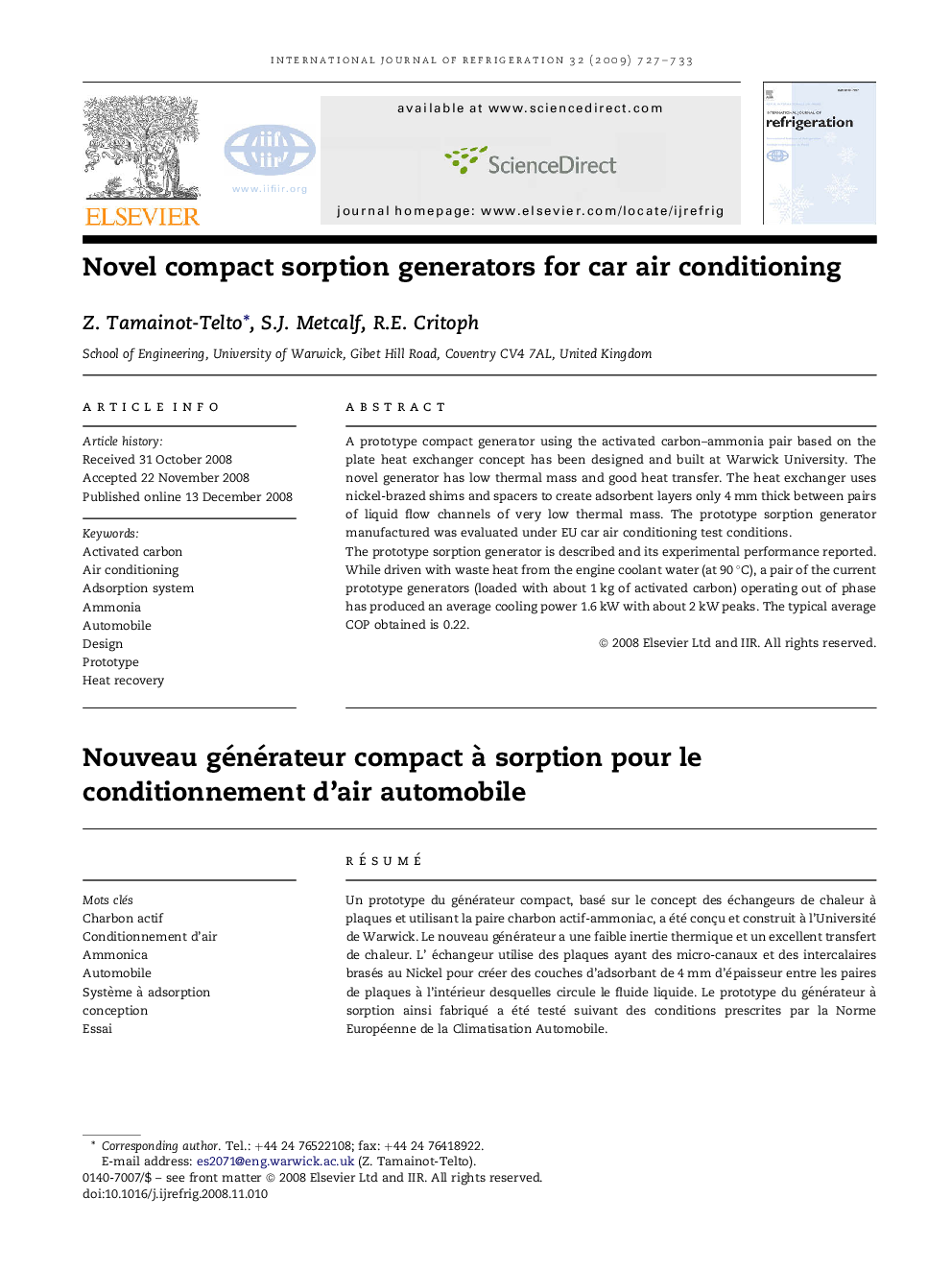| Article ID | Journal | Published Year | Pages | File Type |
|---|---|---|---|---|
| 789850 | International Journal of Refrigeration | 2009 | 7 Pages |
A prototype compact generator using the activated carbon–ammonia pair based on the plate heat exchanger concept has been designed and built at Warwick University. The novel generator has low thermal mass and good heat transfer. The heat exchanger uses nickel-brazed shims and spacers to create adsorbent layers only 4 mm thick between pairs of liquid flow channels of very low thermal mass. The prototype sorption generator manufactured was evaluated under EU car air conditioning test conditions.The prototype sorption generator is described and its experimental performance reported. While driven with waste heat from the engine coolant water (at 90 °C), a pair of the current prototype generators (loaded with about 1 kg of activated carbon) operating out of phase has produced an average cooling power 1.6 kW with about 2 kW peaks. The typical average COP obtained is 0.22.
RésuméUn prototype du générateur compact, basé sur le concept des échangeurs de chaleur à plaques et utilisant la paire charbon actif-ammoniac, a été conçu et construit à l'Université de Warwick. Le nouveau générateur a une faible inertie thermique et un excellent transfert de chaleur. L' échangeur utilise des plaques ayant des micro-canaux et des intercalaires brasés au Nickel pour créer des couches d'adsorbant de 4 mm d'épaisseur entre les paires de plaques à l'intérieur desquelles circule le fluide liquide. Le prototype du générateur à sorption ainsi fabriqué a été testé suivant des conditions prescrites par la Norme Européenne de la Climatisation Automobile.Le prototype du générateur à sorption est décrit et ses performances experimentales présentées. Une paire dudit prototype (contenant chacun 1 kg the charbon actif), operant avec déphasage et ulisant des pertes thermiques en provenance de l'eau de refroidissement de moteur (à 90 °C), a produit une puissance frigorifique moyenne de 1.6 kW avec une valeur maximum de 2 kW. La valeur typique du COP moyen est de l'ordre de 0.22.
